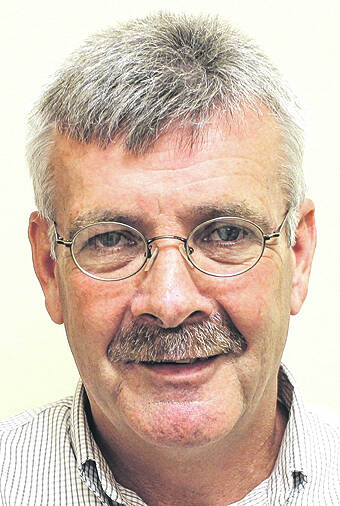
The Highland County Fair will celebrate its 75th anniversary when it opens next week on the fairgrounds in Hillsboro that includes more than 25 buildings and many other amenities. But it wasn’t always that way.
In fact, when the fair originated at its current location in 1947, all the exhibits were placed under tents.
A lot has changed since then, but the purpose has remained the same.
Fairs have been part of the Highland County history since the 1800s. Early fairs were held in Rainsboro, Greenfield, Hillsboro and in the southern part of the county at Roberts Park. Then in the 1930s, there was an effort to revive the county fair.
In 1937, the Highland County Agricultural Society held a fair in Greenfield, and in 1938 a fair was held on the site of Roberts Park, formerly a state roadside park located along U.S. Route 62. In 1939, the fair was held Sept. 27, 28, 29 and 30 on the streets of Hillsboro.
The fair effort was placed on hold during the World War II years. In March of 1946, a group of concerned citizens in Highland County formed a Grounds Committee for Fairgrounds Campaign. They made up the committee with a representative chairman from each of the 17 townships in the county and any other people interested in starting a county fair.
In June of 1946, the same group of men organized and formed the Highland County Agricultural Society. They sold society memberships for $1 a person. There was an old existing fairground, owned by a local businessman, that consisted of 20 acres. The grounds were rough and covered with several trees, had a couple of old buildings in much need of repair, and part of a grandstand. There had not been a fair held there since the Great Depression and World War II.
Over the next couple years there was much discussion and efforts were made by the society to buy another parcel of land for a permanent fair site. Due to a lack of funds, it never happened, and eventually the society purchased the old fairgrounds consisting of 20 acres for $3,000. It is the site of today’s Highland County Fair.
After much bull dozing and dirt moving, tree removal and demolition of the old buildings (they saved the lumber for future use), the ground was ready for new buildings. One of the first buildings erected was in 1949. The Ohio National Guard approached the society’s board to build a 52-foot by 128-foot cement block building at the south end of the grounds for equipment storage. The National Guard made the building available for fair use during fair week.
The fair continued on for a few more years, then on Sept. 25, 1954, fair and other officials held a beef barbecue to raise funds for the grounds’ first new, permanent building.
That plan came to fruition in 1955 when the first livestock structure, a 78-foot by 144-foot dairy barn, was erected. A fair secretary’s office was built the same year, and in 156 two more barns were constructed, one for swine and one for sheep exhibitors. In 1957, the Highland County Grange built a concrete block Grange Building for its meetings, complete with the first kitchen facilities on the fairgrounds. The Grange served lunch and meals during fair week until the building was paid for.
One of those 1955 officials was Bob Hodson.
“I was driving past the fairgrounds (in August) and was reminded of earlier times,” Hodson said in recent letter to yours truly. “You can see at the fair what happened over the years. A lot of planning was done and has actually never stopped.”
At the time, Hodson was the vocational agriculture teacher and FFA adviser in Leesburg. He said he certainly played no bigger role in the fair’s beginnings than many others.
Some of the others on that 1954 barbecue committee included Robert Shanks; Stanley Kibler of Lynchburg, the fair board president; E.J. Cook of New Vienna; Nora Meredith, a county home agent; J.E. Rupple of Greenfield, a fair board member; and Lowell Douce, a county ag agent.
Often, the toil and thought of so many who have labored to make the fair what it is today are forgotten. That should not be, because as Hodson said, “the fair is important and memorable.”
Recently, I was talking with some current fair board members. They said they are fighting an uphill battle to preserve the fair so that their children and grandchildren and can enjoy what generations before them enjoyed. They said they understand that it can be expensive for a family to pay $10 each for general admission (which includes rides) to the fair. But they also said the proceeds from a one-week fair are no longer enough to keep the fairgrounds operational.
As Hodson said, the fair is important, especially in a rural community. If you know anything of the character, work ethic, leadership skills and confidence that 4-H and other fair-related programs instill in tomorrow’s leaders, you understand.
So rather than complain, maybe you should offer those who have and are keeping the fair alive in Highland County a pat on the back. It’s a thankless job and they deserve it.
Here’s to another 75 years of the Highland County Fair.
Jeff Gilliland is the editor of The Times-Gazette. He can be reached at [email protected] or 937-402-2522.


